Our editors independently select these products. Making a purchase through our links may earn Well+Good a commission
The Real Differences Between Down and Down Alternative Duvets—And How To Choose the Best One for You
Experts explain differences between down versus down alternative duvets. Then get selections for the best options of each to buy.

Furnishing a home comes with endless choices, which can lead to some serious decision fatigue. In zeroing in more specifically on decorating the bedroom, even after you’ve picked out your mattress and bed frame, you have to decide what goes on the bed. How many pillows? Cooling sheets or super-sustainable ones? And then, you have to pick the topper. Within this single bedding choice, a number of questions arise, specifically surrounding the issue of down versus down alternative duvet.
Experts in This Article
During a recent bedroom styling consultation with bedding and homewares brand Parachute, remote stylist manager Mindy King asked me where I stand regarding down versus down alternative for duvet fills, and I froze. The session—a complimentary service the brand offers to help customers design (or redesign) their spaces—was intended for us to pick out bedding (colors and fabrics) for my new space. And while we did discuss that, once we got to the topic of duvet, I couldn’t help but pick her brain. Because, well, I had no idea what my needs and wants were.
As is the case with most choices in the home-decor space, there’s no right or wrong choice regarding down versus alternative down duvet fill, but there are some key considerations a person should make to ensure they’re selecting the best choice for their specific lifestyle.
Down versus down alternative duvet fills: What are the real differences?
The material
Down comes from ducks and geese; it’s the layer beneath their feathers that serves as their personal insulation. And, who might be interested in sleeping under said insulation? “Down is perfect for someone looking for a lush, warm sleep experience,” King says, adding that for those who want that full, hotel-bed look, it’s is a great choice.
Down alternative, by contrast, is made from a range of synthetic materials including cotton, rayon, and polyester, among other fabrics. While it is possible to buy down products certified as ethical by a number of nonprofit groups, it’s worth noting that down is not vegan, so if you lead an animal byproduct-free life, down alternative is likely the best choice for you.
The allergen factor
There’s also a health component to consider when choosing a down versus down alternative duvet. “For those who experience year-round or chronic allergies, down duvets and comforters may not be the best fit for a great night’s sleep,” says allergist Neeta Ogden, MD. “People who have chronic year-round allergy symptoms should start thinking that indoor triggers to which they have constant exposure are potential triggers. This includes down, which is composed of feathers to which people can be allergic, but it can also harbor dust-mite and mold spores and animal dander to which people also have chronic allergies.”
While Dr. Ogden typically only suggests folks use down alternative duvets because of the allergen factor that down may present, she also notes that down alternative isn’t automatically maintenance-free when it comes to preserving health. Since any fibers—including down alternative—can harbor common allergens like mold spores, animal dander, and dust mites, it’s important to wash your duvet cover or comforter one to two times a month if you are experiencing symptoms (less often if you are not), Dr. Ogden says.
The durability
Upkeep for down and down alternative duvets aren’t identical. “Bringing a real goose down duvet to the dry cleaner’s will always be the safest option, but you can often wash it at home if you use gentle detergent like Woolite, a gentle cycle followed by an extra spin cycle to remove as much water as possible, and finally a lengthy dry in a warm dryer with a bunch of tennis or dryer balls to fluff the feathers,” says cleaning expert Melissa Homer, chief cleaning officer at MaidPro. “Down alternative duvets are a breeze to care for by comparison, as they are very commonly washer- and dryer-friendly and dry faster than their feathery counterparts.”
That said, Homer says from a cleaning and maintenance perspective, either option can be great, so long as you find a quality product to start with. “There are amazing down and down alternative duvets out there that will last you decades, but there is also a lot of junk that will pop seams in a year, so shop with scrutiny and read the reviews,” she says. With that in mind, keep reading for the best duvet options to buy—no matter whether you’re in the down or down-alternative camp.
Down versus down alternative: The best options for each category to try
3 down duvet inserts
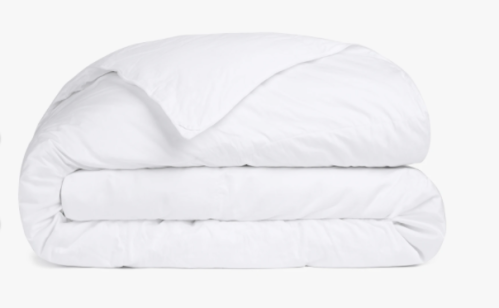
Parachute Down Duvet Insert — $249.00
Both Parachute’s down alternative and down duvets are made with baffle-box construction—which means a strip of fabric separates the top and bottom fabric layers to keep the fill optimally fluffy and evenly distributed. “That’s key to keeping you comfy throughout your slumber and your bedscape looking beautiful,” says King.
The premium European feathers in the down duvet is covered with a sleek, sateen cotton shell for a cool-but-cozy sleeping experience.
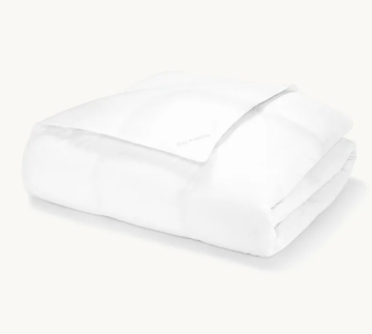
Boll & Branch — $358.00
The responsibly sourced down is both Oeko-Tex certified for being harmless to human health and International Down Standard (IDS) certified for being ethically sourced and traceable to a parent farm. The duvet comes in three weights, with corner loops to attach to the duvet cover, and has baffle-box construction.
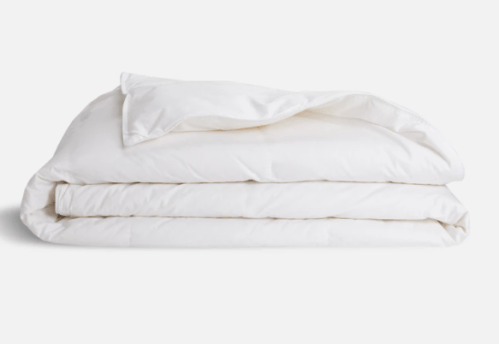
Brooklinen Down Comforter — $135.00
Brooklinen’s down duvet fill is treated with antimicrobials and is hypoallergenic, so it may work for folks with sensitivities.
6 down alternative duvet inserts

Parachute Down Alternative Duvet Insert — $119.00
Made with hypoallergenic, microfiber fill, this down alternative piece from Parachute is designed to mimic the plush look and cozy feel of a down comforter—minus the allergens.
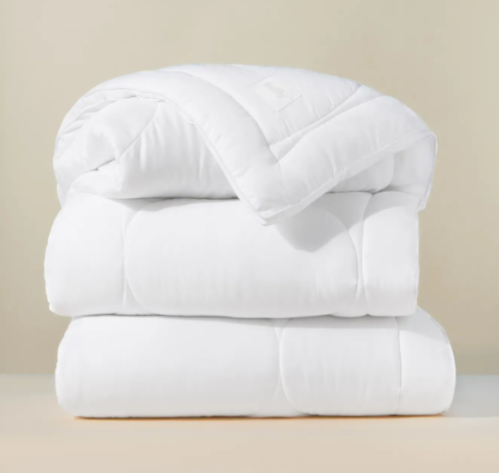
Buffy Cloud — $116.00
Buffy Cloud isn’t only an ethically sourced down alternative duvet fill, it’s also sustainable. Each duvet, features a eucalyptus-fiber shell, is made with 100-percent recycled fibers, featuring about 50 recycled plastic bottles. It’s also functional, with loops in every corner to make duvet-cover attachment a cinch.
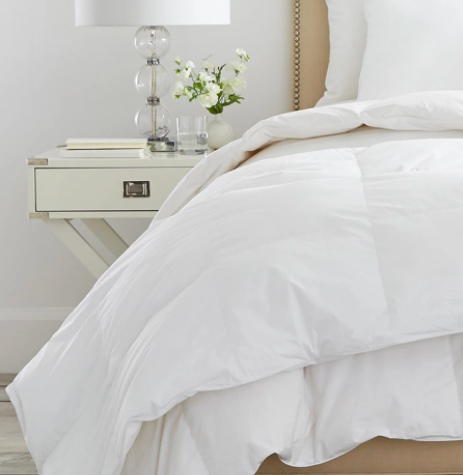
Boll & Branch Down Alternative Insert — $258.00
With baffle-box construction, a 100 percent cotton shell, and premium allergy-friendly fill, Boll & Branch engineered this comforter to look and feel like down.

Brooklinen Down Alternative Comforter — $110.00
Available in lightweight, all-season, and ultra-warm, down alternative Brooklinen duvet aims to mimic the look and feel of down fill.
ThirdLove Just Launched Bras That Help Balance Your Body Temperature—Here’s Why That’s a Game-Changer for Women in All Life Stages

These Are the Only Types of Underwear You Should Be Wearing, According to Gynecologists

These Are the Summer Essentials You Should Bring With You Every Time You Leave the House, According to a Derm and an RD

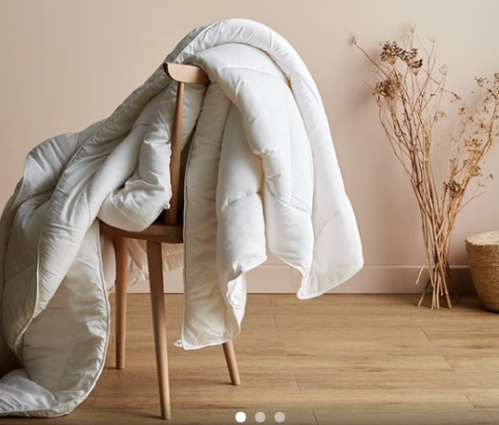
Ettitude Down Alternative Comforter — $198.00
Ettitude’s hypoallergenic down alternative comforter is made sustainably from bamboo fill and a cooling bamboo shell, making it ideal for hot sleepers.
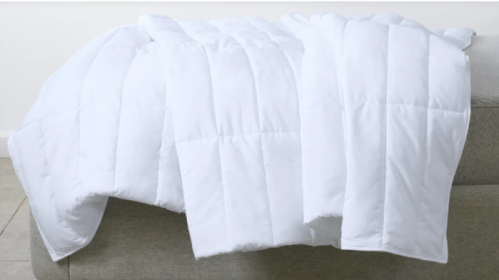
Casper Down Alternative Duvet — $161.00
Casper’s down alternative duvet is made with a sustainable and breathable Tencel-fiber shell aimed to protect from overheating without skimping on any coziness factor, thanks in part to its sewn-in chambers to keep the fill evenly distributed. The polyester fill is made from recycled water bottles but is designed to feel like down (and not, well, water bottles). It’s also conveniently machine-washable.
Sign up for the Well+Good SHOP Newsletter
Get exclusive deals on wellness, beauty, fitness, and food products that have been hand-picked by our editors.
Got it, you've been added to our email list.







